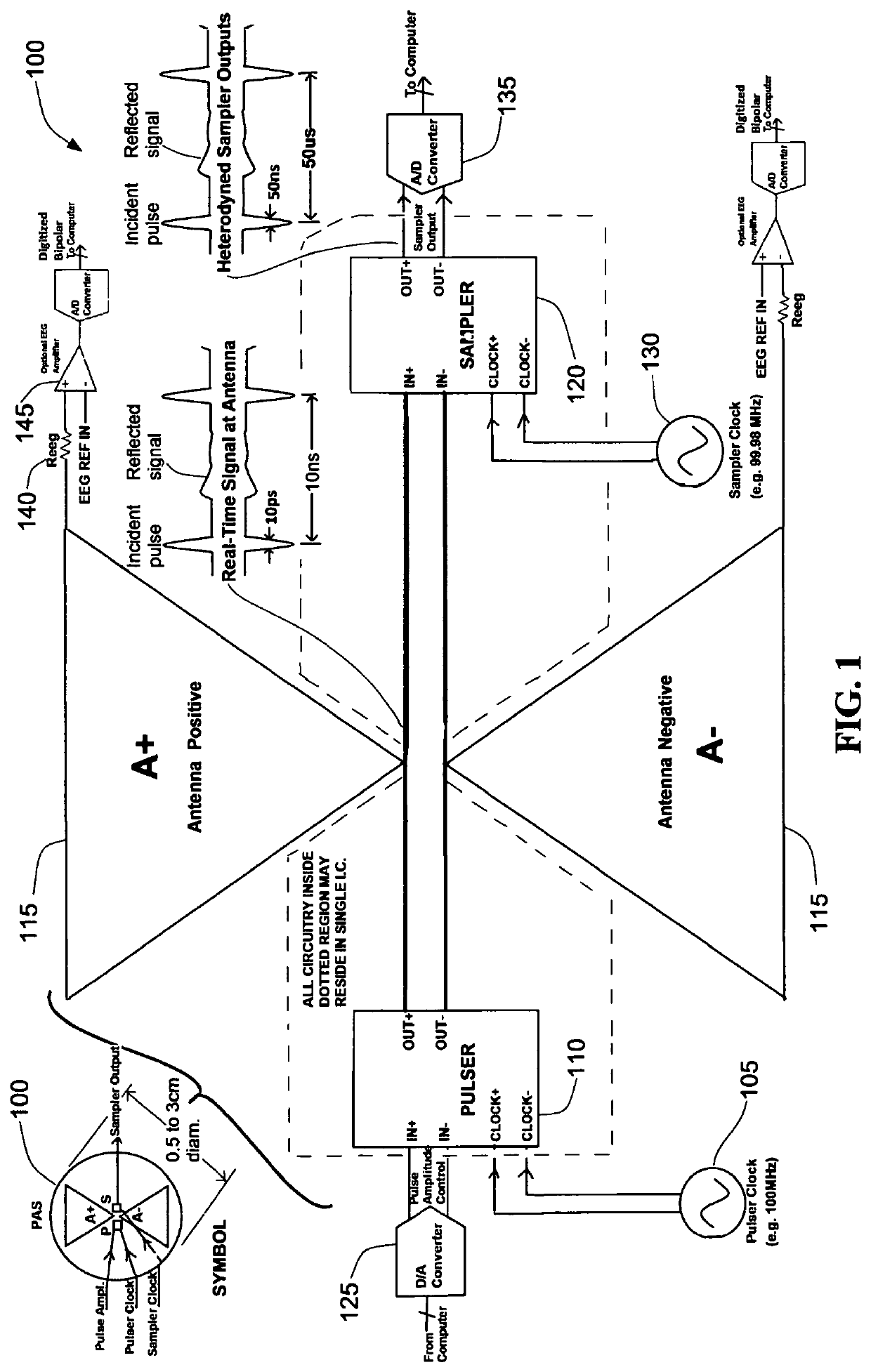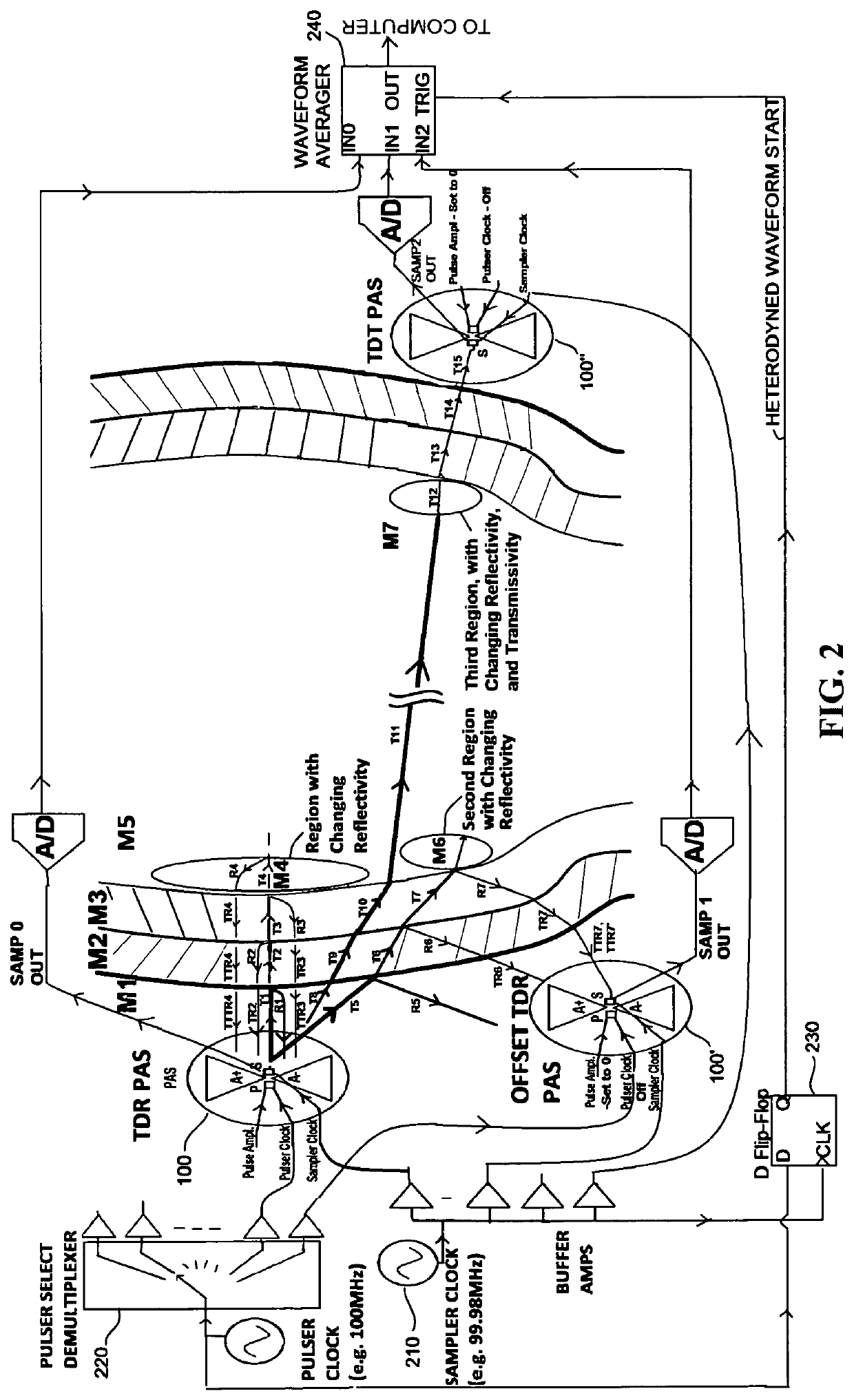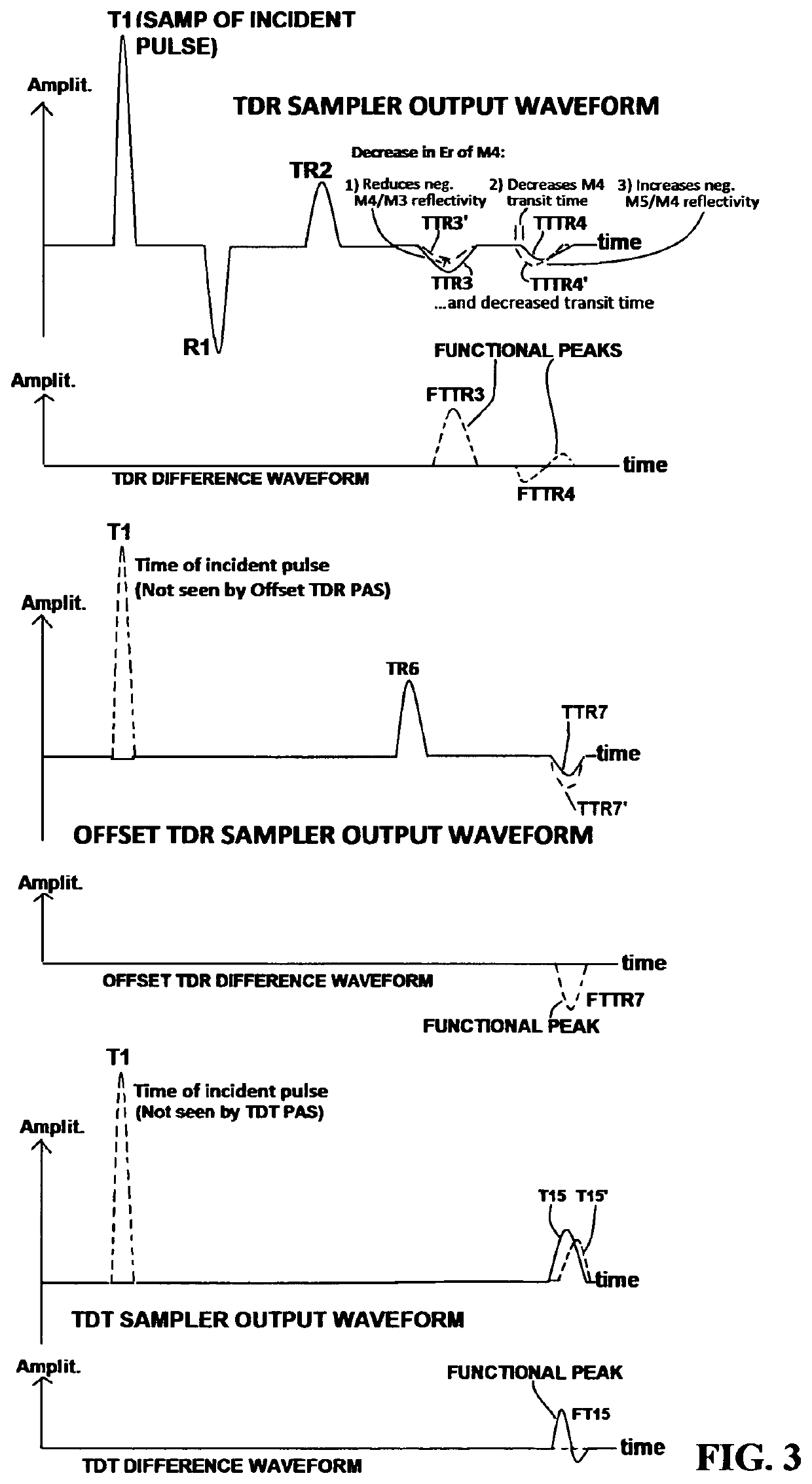Method and apparatus for non-invasive real-time biomedical imaging of neural and vascular activity
a biomedical imaging and neural and vascular activity technology, applied in the field of medical imaging, can solve the problems of microwave imaging, inability to produce sharp images of deep structures within the human head or body, and invention that fails to provide real-time spatial measurements of functional operations in the brain
- Summary
- Abstract
- Description
- Claims
- Application Information
AI Technical Summary
Benefits of technology
Problems solved by technology
Method used
Image
Examples
Embodiment Construction
[0038]The present invention provides a compact, sensitive, and low cost waveform-edge-based medical imaging system using one or more assemblies each containing an electrical pulse or square wave generator, an antenna or microwave probe, and an electrical sampler. The pulse generator, herein also termed a pulser, is located on an electrical circuit and generates an electrical pulse, meaning a short burst, of near-Gaussian shape in some embodiments. Pulses are fed to the antenna that in turn emits an electromagnetic wave whose amplitude envelope is essentially that of the electrical pulse's shape. In use, the antenna is oriented so the electromagnetic wave propagates into the surface of the body over a region of interest. The antenna also receives energy reflected from the body in response to its own pulses, and can further receive energy from pulses which propagated through the body from one or more other pulsers with their antennae. An electrical sampler, optionally located within t...
PUM
 Login to View More
Login to View More Abstract
Description
Claims
Application Information
 Login to View More
Login to View More - R&D
- Intellectual Property
- Life Sciences
- Materials
- Tech Scout
- Unparalleled Data Quality
- Higher Quality Content
- 60% Fewer Hallucinations
Browse by: Latest US Patents, China's latest patents, Technical Efficacy Thesaurus, Application Domain, Technology Topic, Popular Technical Reports.
© 2025 PatSnap. All rights reserved.Legal|Privacy policy|Modern Slavery Act Transparency Statement|Sitemap|About US| Contact US: help@patsnap.com



